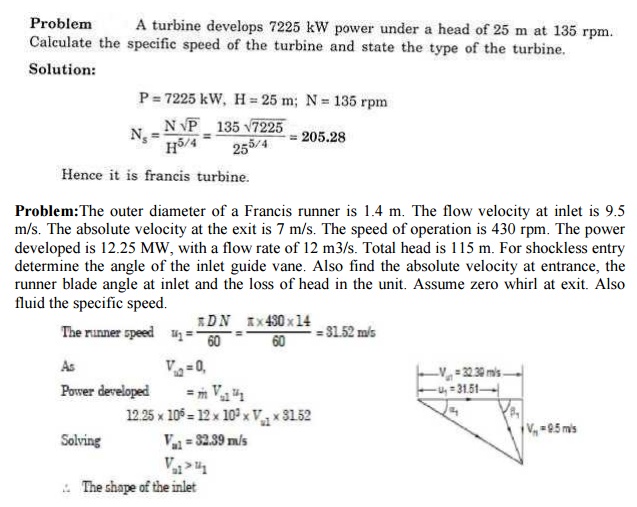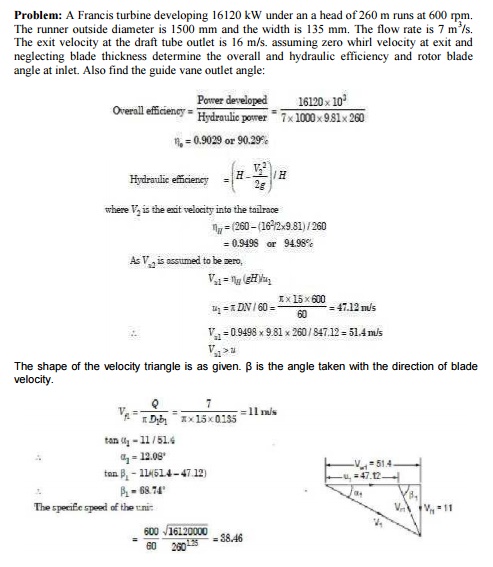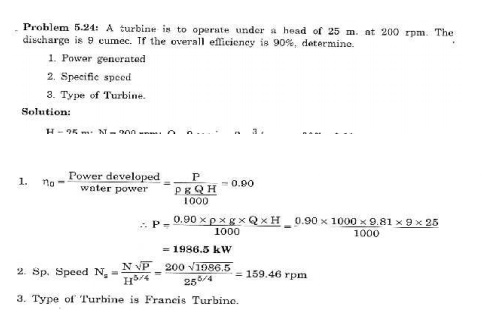Chapter: civil : Applied Hydraulic Engineering: Turbines
Francis Turbine

Francis
Turbine
The Francis turbine is a type of
water turbine that was developed by James B. Francis in Lowell, MA. It is an
inward-flow reaction turbine that combines radial and axial flow concepts.
Francis turbines are the most common
water turbine in use today. They operate in a head range of ten meters to
several hundred meters and are primarily used for electrical power production.
. The inlet is spiral shaped. Guide vanes direct the
water tangentially to the turbine wheel, known as a runner. This radial flow
acts on the runner's vanes, causing the runner to spi n. The guide vanes (or
wicket gate) may be adjustable to allow efficient turbine operation for a range
of water flow conditions.
As the water moves through the runner,
its spinning radius decreases, further acting on the runner. For an analogy,
imagine swinging a ball on a string around in a circle; if the string is pulled
short, the ball spins faster due to the conservation of angular momentum. This
property, in addition to the water's pressure, helps Francis and other
inward-flow turbines harness water energy efficiently. Water wheels have been
used historically to power mills of all types, but they are inefficient.
Nineteenth-century efficiency
improvements of water turbines allowed them to compete with steam engines
(wherever water was available).
In 1826
Benoit Fourneyron developed a high efficiency (80%) outward-flow
water turbine. Water was
directed tangentially through the turbine runner, causing it to
spin. Jean - Victor Poncelet designed an inward-flow turbine in about 1820 that
used the same principles. S. In 1848 James B. Francis, while working as head engineer
of the Locks and Canals company in the
water-powered factory city
of Lowell, Massachusetts,
improved on these designs to
create a turbine with 90% efficiency. He applied scientific principles and
testing methods to produce a very efficient turbine design. More importantly,
his mathematical
and graphical
calculation methods improved turbine design and engineering. His analytical
methods allowed confident design of high efficiency turbines to exactly match a
site's flow conditions.
The Francis turbine is
a reaction turbine, which means that the working fluid changes pressure as it
moves through the turbine, giving up its energy. A casement is needed to
contain the water flow. The turbine is located between the high-pressure water
source and the low-pressure water exit, usually at the base of a dam.
The inlet is spiral
shaped. Guide vanes direct the water tangentially to the turbine wheel, known
as a runner. This radial flow acts on the runner's vanes, causing the runner to
spin. The guide vanes (or wicket gate) may be adjustable to allow efficient
turbine operation for a range of water flow conditions.
As the water moves
through the runner, its spinning radius decreases, further acting on the
runner. For an analogy, imagine swinging a ball on a string around in a circle;
if the string is pulled short, the ball spins faster due to the conservation of
angular momentum. This property, in addition to the water's pressure, helps
Francis and other inward-flow turbines harness water energy efficiently.



Related Topics